 |
Rubens Peale -- Click Here
|
|
Rubens Peale (May 4, 1784 - July 17, 1865) was an American artist and museum director. Born in Philadelphia, he was a son of artist-naturalist, Charles Willson Peale.
|
|
 |
Roll Alfed Philippe -- Click Here
|
|
Paris 1846-Paris 1919
|
|
 |
Robert Peckham -- Click Here
|
|
painted The Raymond Children in 1838 |
|
 |
Robert Peake the Elder -- Click Here
|
|
1576-1626
British
Robert Peake Gallery |
|
 |
Robert Havell Jr Prints -- Click Here
|
|
1793-1878
Engraver and painter, cousin of William Havell. He learnt the art of aquatint engraving from his father, Robert Havell I. He worked first in the family engraving business and then c. 1825-7 with Colnaghi in London. In 1827 he undertook the execution in aquatint of the plates for John James Audubon Birds of America, published in parts in London between 1827 and 1838. Havell engraved 425 of the plates and reworked the ten that had been engraved by William Home Lizars in Edinburgh. Havell father printed and coloured some of the double elephant folio sheets in 1827-8 after which Havell took on those tasks himself, establishing himself as a master of aquatint. Among his other important works in the medium are the plates for Mrs E. Bury Selection of Hexandrian Plants (London, 1831-4). In 1839, at Audubon invitation, Havell moved with his family to New York and embarked on a new career as a landscape painter in the style of the Hudson River school, while also working as an engraver. He settled in the Hudson River villages of Ossining (1841) and Tarrytown (1857) but painted throughout north-eastern America. View of Deerfield, Massachusetts (1847; Hist. Deerfield, MA) is characteristic of his quietly romantic idealization of his subjects. Niagara Falls from the Chinese Pagoda (1845; New York, Pub. Lib.), engraved by Havell after one of his paintings, is among the best known of his American aquatints. Though his reputation rests largely on his work for Audubon, his original subjects gave him greater opportunities to display the full range of his aquatint technique.
Part of the Havell family |
|
 |
RING, Pieter de -- Click Here
|
|
Dutch Baroque Era Painter, ca.1615-1660 |
|
 |
Richard Paton -- Click Here
|
|
was a British marine painter.
Paton spent his artistic career in London, where he is said to have been born, although no record of his birthplace or parentage is known. He is said to have grown up in poverty, and he is described as "self-taught". Some critics have discerned an influence of Samuel Scott's works, and also of Charles Brooking. Any such influence is hardly evident.
According to an account by Harry Parker, in "The Mariner's Mirror", March 1912, p 85, while Paton was begging "on Tower Hill, he attracted the attention of Admiral Sir Charles Knowles (died 1777), who happened to be passing that way, and who, taking a fancy to the boy, offered to take him to sea". He was assistant to the shipes painter on Knowles' ship, gaining knowledge in both painting and seamanship. In 1742, he started working at the Excise Office.
His first exhibition was in 1758 on the premises of the London-based Society of Artists, where he continued to exhibit up to 1770. The Royal Academy hosted his works between 1762 and 1780.
Paton's specialities were marine and naval paintings. He painted naval actions of wars ongoing at the time of painting such as the Seven Years War of 1756-1763 and later The American Revolutionary War, as well as earlier events such as the battles of the War of the Quadruple Alliance which took place when he was a baby. The paintings include many dramatic effects such as battles at night, the shooting of cannons and the effect of bombardments. There are, however, also less militant themes such as ships becalmed. His "sublime depiction of the sky" was considered especially noteworthy. Prints of his works, made among others by Pierre-Charles Canot, made them widely known.
|
|
 |
Richard Parkes Bonington -- Click Here
|
|
1802-1828
Richard Parkes Bonington Locations
English painter. His father, also called Richard (1768-1835), was a provincial drawing-master and painter, exhibiting at the Royal Academy and the Liverpool Academy between 1797 and 1811. An entrepreneur, he used his experience of the Nottingham lace-manufacturing industry to export machinery illegally to Calais, setting up a business there in late 1817 or early 1818. In Calais the young Richard Parkes Bonington became acquainted with Louis Francia, with whom he consolidated and expanded whatever knowledge of watercolour technique he had brought with him from England. Under Francias direction Bonington left Calais for Paris where, probably not before mid- or late 1818, he met Eugene Delacroix. The latters recollection of Bonington at this time was of a tall adolescent who revealed an astonishing aptitude in his watercolour copies of Flemish landscapes. Once in Paris Bonington embarked on an energetic and successful career, primarily as a watercolourist. In this he was supported by his parents who sometime before 1821 also moved to Paris, providing a business address for him at their lace company premises. |
|
 |
Rembrandt Peale -- Click Here
|
|
1778-1860
Rembrandt Peale Galleries
Rembrandt Peale (February 22, 1778 ?C October 3, 1860) was a 19th century American artist that received critical acclaim for his portraits of presidents George Washington and Thomas Jefferson. Although modern art critics would consider Peale??s artwork as French neoclassical, its dark and stylized characteristics are similar to 15th and 16th century paintings.
Rembrandt Peale was born the third of six surviving children (eleven had died) to his mother, Rachel Brewer, and father, Charles Willson Peale in Bucks County, Pennsylvania, on February 22, 1778. The father, Charles, also a notable artist, taught each child to paint scenery and portraiture, and Rembrandt was no exception. Charles tutored Rembrandt about the importance of having a strong mind from learning arts and sciences. At the age of eight, Rembrandt discovered drawing, and at thirteen, painted his first known self-portrait. Later on in his life, Rembrandt Peale "often showed this painting to young beginners, to encourage them to go from 'bad' to better..." like his steady progressions to become a successful portraitist.
A year after his mother??s death and remarriage of his father, Rembrandt Peale left the school of the arts, thereby applying his time to completing his first ever self-portrait at the age of 13. The canvas illustrates early mastery of a young aspiring artist, seeming very mature. The clothes, however give the notion that Peale over-exaggerated what a 13 year old would look like. This style demonstrates early forms of neoclassicism by the looks of Peale's angel-like hair, the way it waves and curls in such a fashion so as to depict an angel from a general Renaissance artist's works of art.
In July of 1787, Charles Willson Peale introduced his son Rembrandt to George Washington, where the young aspirant artist watched his father paint the remarkable figure of the country. In 1795, at the age of 17, Rembrandt painted an aging Washington, though the painter had depicted the politician as far more aged than the original facial characteristics. It did, nevertheless attain praise and Rembrandt had begun his debut.
At the age of 20, Rembrandt married 22-year-old Eleanor May Short (1776-1836) at St. Joseph's Catholic Church in Philadelphia. During their marriage, Rembrandt and Eleanor had nine children: Rosalba, Eleanor, Sarah Miriam, Michael Angelo, and Emma Clara among them.
In 1822, Peale moved to New York City where he embarked on an attempt to paint what he hoped would become the "standard likeness" of Washington. He studied portraits by other artists including John Trumbull, Gilbert Stuart and his own father, as well as his own 1795 picture which had never truly satisfied him. His resulting work Patriae Pater, completed in 1824, depicts Washington through an oval window, and is considered by many to be second only to Gilbert Stuart's iconic Athenaeum painting of the first president. Peale subsequently attempted to capitalize on the success of what quickly became known as his "Porthole" picture. Patriae Pater was purchased by Congress in 1832 and still hangs in the U.S. Capitol.
Later on, Peale made over 70 detailed replicas of the same "father of our country", the first President of the United States. Peale continued to paint other noted portraits, such as those of the third president Thomas Jefferson while he was in office (1805), and later on a portrait of Chief Justice John Marshall. |
|
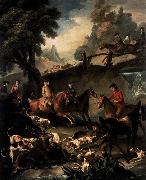 |
REIJSSCHOOT, Pieter Jan van -- Click Here
|
|
Flemish painter
b. 1702, Ghent, d. 1772, Ghent
|
|
 |
Raphaelle Peale -- Click Here
|
|
1774-1825
Peale was born in Philadelphia as the son and first child of Rachel and Charles Willson Peale, a famous portraitist.
Lived in Philadelphia, on a home at the corner of 3rd and Lombard.
Married Martha (Patty) McGlathery at the age of 20.
First first professional exhibition was in 1795 at the age of 21.
Artist. Born Raphaelle Peale in Annapolis, Maryland on February 17, 1774, the fifth child, though eldest surviving, of Charles Willson Peale and his first wife Rachel Brewer. As with all the Peale children, Raphael was trained by his father as an artist. Early in his career, the pair collaborated on portraits. On some commissions, Raphael painted miniatures while his brother, Rembrandt, painted full size portraits.
In 1792, he made a trip to South America in order to collect specimens for the Peale's Museum. In 1797, with his brother Rembrandt, he traveled to Charleston, South Carolina, where they attempted to establish another museum. The plan fell through, however, and Raphael returned to painting miniatures.
He married Martha McGlathery at about that same time, and with her had eight children. For about two years beginning in 1803, Raphael toured Virginia with the ??physiognotrace,' a profile making machine, with which he was briefly successful. In August 1808, he was hospitalized with delirium tremens, exacerbated by severe gout. By 1813, he was unable to walk without crutches. After the downturn in his health, in an era when most artists considered still life a subject worthy only of amateurs, he devoted himself almost exclusively to still life painting. It is for these works he is best known. Raphael Peale is today considered the founder of the American Still Life school. His work was on frequent exhibit at the Pennsylvania Academy of the Fine Arts between 1814 and 1818. After reportedly indulging in a night of heavy drinking, his health destroyed, Raphael died on March 3, 1825 at age 51 at his home in Philadelphia.
Peale's tightly grouped still lifes are often permeated with a delicate melancholy akin to that which characterized the life of the artist; he was an alcoholic who suffered the effects of arsenic and mercury poisoning caused by his work as a taxidermist in his father's museum. His spare, essential style may have been influenced by the Spanish still lifes he studied in Mexico and by the works of Juan Sanchez Cotan, exhibited at the Pennsylvania Academy in 1818. |
|
 |
PYNAS, Jacob -- Click Here
|
|
Dutch Baroque Era Painter, ca.1585-1650 |
|
 |
PYNACKER, Adam -- Click Here
|
|
Dutch Baroque Era Painter, 1622-1673 |
|
 |
PULIGO, Domenico -- Click Here
|
|
Italian Painter, 1492-1527
He trained in Florence with Ridolfo Ghirlandaio and in the workshops of Antonio del Ceraiuolo ( fl 1st half 16th century) and Andrea del Sarto. What may be his earliest surviving work, the Virgin and Child with St John (c. 1513; Rome, Pal. Venezia), reflects the style of Ghirlandaio. Other early paintings, however, such as the Holy Family (Florence, Gal. Corsini), show the influence of Fra Bartolommeo and Andrea del Sarto and are little affected by Ghirlandaio. The Virgin and Child with the Infant St John (c. 1522; Florence, Pitti) clearly reflects the examples of Fra Bartolommeo and Raphael, with the figures in the manner of Andrea del Sarto. The figure of the Christ Child may derive from Raphael's Madonna of the Pinks (c. 1507-8; Alnwick Castle, Northumb., on loan to London, N.G.). Over a dozen drawings have been attributed to Puligo, but none relates to his extant work or resembles his style of painting. Vasari described him as a particularly lazy artist, which may account for this scarcity of drawings and for the frequency of borrowed motifs and repeated compositions in his smaller religious paintings. Such borrowing often resulted in a lack of harmony in his compositions, as in the Pitti Virgin and Child. The influence of the more sculptural forms of Andrea del Sarto's work of the 1520s can be seen in the Mary Magdalene (c. 1525; Ottawa, N.G.). |
|
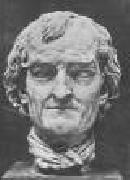 |
PUGET, Pierre -- Click Here
|
|
French Baroque Era Sculptor, 1620-1694
French sculptor, painter, draughtsman and architect. Puget was one of the outstanding artists of his century, but his style, formed by the Italian Baroque, did not however always find favour in the classicizing atmosphere of the French court, where Jean-Baptiste Colbert would describe him in 1670 as 'a man who goes a little too fast, and whose imagination is a little too heated'. Although the son of a master mason, Simon Puget (d 1623), Puget was largely self-taught, as were his brother Gaspard Puget (1615-after 1683), an architect, and his son Fran?ois Puget (1651-1707), a painter. Apprenticed in 1634 to a wood-carver, Jean Roman, in Marseille, he left in 1638 for Italy, spending some years in Florence and Rome close to Pietro da Cortona, presumably as a stuccoist and painter, although his part in the decoration of the Palazzo Pitti, Florence, Cortona's main project of these years, is not clear. From 1643 he practised sculpture and painting at the Toulon Arsenal, France's largest naval shipyard, where he was appointed to the wood-carving workshop: around 1645, for instance, he designed and supervised the decoration of the ship Le Magnifique (in 1646 renamed La Reine; destr.). According to some sources, in 1646 he made a second journey to Italy, |
|
 |
puccini -- Click Here
|
|
Period: Post-Romantic (1870-1909)
Country: Italy
Born: December 22, 1858 in Lucca, Italy
Died: November 29, 1924 in Brussels, Belgium
Genres: Chamber Music, Miscellaneous Music, Opera, Vocal Music
|
|
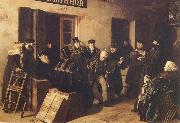 |
Pryanishnikov Illarion -- Click Here
|
|
1840-1894,Russian painter. He studied from 1856 to 1866 at the School of Painting, Sculpture and Architecture in Moscow and subsequently taught there (1873-94). Among his pupils were Sergey Ivanov and Sergey Korovin. Pryanishnikov was among the fifteen founder-members of the Peredvizhniki (WANDERERS) and contributed two works to their first exhibition. His narrative pictures of the 1860s embodied the critical trend in early Russian Realism and focused on the trials and sorrows of the lower classes; his Jokers (1865; Moscow, Tret yakov Gal.) shows a petty clerk performing stunts for the amusement of some wealthy merchants. The Convoy of Empty Sleds (1871; Kharkiv, Mus. F.A.) conveys a fine sense of the bleak winter landscape. His later work added northern scenery and genre scenes to his repertory as in Saviour Day in the North (1887; Moscow, Tret yakov Gal.) and Return from the Fair (1883; St Petersburg, Rus. Mus.). Pryanishnikov is also known for his hunting scenes. In 1893 he became a member of the St Petersburg Academy of Arts. |
|
 |
PROVOST, Jan -- Click Here
|
|
Flemish Northern Renaissance Painter, 1465-1529 |
|
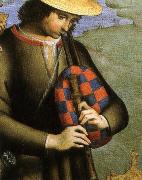 |
proverb -- Click Here
|
|
1150 - 80. In North America the best-known collection is probably Poor Richard's, an almanac published 1732 - 57 by Benjamin Franklin. In North America may be the most famous collection of Richard are poor, and the publication of one year from 1732 to 1757 by Benjamin Franklin. |
|
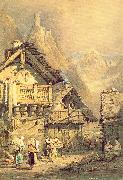 |
Prout, Samuel -- Click Here
|
|
English Painter, 1783-1852
Painter, draughtsman and writer. Together with his fellow pupil Benjamin Robert Haydon, Prout was encouraged to study drawing by the headmaster of his grammar school in Plymouth. In 1801 he met the topographer and antiquarian John Britton, who, impressed with his work, invited him to London the following year to make drawings of antiquarian subjects and copy works of other artists, including Thomas Hearne, William Alexander and J. M. W. Turner. |
|
 |
Prospero Fontana -- Click Here
|
|
(1512 - 1597) was an Italian painter of the late Renaissance.
Fontana was born in Bologna, and became a pupil of Innocenzo da Imola. He afterwards worked for Perin del Vaga in the Palazzo Doria in Genoa. Towards 1550, it is reported that Michelangelo introduced him to Pope Julius III as a portrait-painter; and he was pensioned at the pontifical court. He later joined Vasari's studio in Florence, and worked in frescoes at the Palazzo Vecchio (1563-65). He is an early representative of the Bolognese school of painting. Sabbatini, Sammachini and Passerotti were three of his principal pupils or colleagues. His daughter, Lavinia Fontana, was also a prominent painter of mostly conventional religious canvases.
Returning to Bologna, after doing some work in Fontainebleau (France) and in Genoa, he opened a school of art, in which he became briefly the preceptor of Lodovico and Agostino Carracci. He has left a large quantity of work in Bologna. His altarpiece of the Adoration of the Magi, in the church of Santa Maria delle Grazie, being considered his masterpiece. It is not unlike the style of Paul Veronese. He died in Rome in 1597.
|
|
 |
Prosper Marilhat -- Click Here
|
|
French Academic Painter, 1811-1847, French painter. He painted his first landscapes and family portraits at Thiers and in the Auvergne before moving to Paris in 1829. After working as the pupil of Camille Roqueplan he was engaged by Baron Karl von H?gel for an expedition to the Near East (1831-3), from which he brought back numerous studies. He visited Greece, Syria, Lebanon and Palestine, stayed in Egypt from October 1831 to May 1833 and returned by way of Rhodes and Corfu. Cairo, the villages of the Delta and Upper Egypt proved to be sources of inspiration for later works. |
|
 |
PROCACCINI, Giulio Cesare -- Click Here
|
|
Italian Baroque Era Painter and Sculptor, 1574-1625
..Painter and sculptor, son of Ercole Procaccini. Having moved to Milan with the rest of the family in the mid-1580s, he trained as a sculptor, perhaps in the workshop of Francesco Brambilla, and then worked (1591-9) for the workshop of Milan Cathedral. The results of this work are difficult to identify, and the most secure attribution is the left term on the altar of St Joseph. There followed a period (1597-1602) of intense sculptural activity for the church of S Maria presso S Celso, for the fa?ade of which he executed two high reliefs in marble, the Visitation and Birth of the Virgin. In 1597 he may have accompanied his brother Camillo to Reggio Emilia, where Camillo added to his earlier fresco decorations for S Prospero. Between 1597 and 1600 Giulio Cesare is documented as working as a sculptor for Cremona Cathedral, to which two sculptures, St Matthew and St John, were delivered, after many delays, in 1625. He also produced the gilded wood Guardian Angel (1597; Cremona, Mus. Civ. Ala Ponzone) for S Monica, Cremona. From Cremona he travelled to Parma, |
|
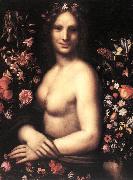 |
PROCACCINI, Carlo Antonio -- Click Here
|
|
Italian painter, Lombard school (b. 1555, Bologna, d. 1605, Milano) |
|
 |
Procaccini, Andrea -- Click Here
|
|
Italian, 1671-1734
Italian painter, draughtsman and architect. A pupil of Carlo Maratti, he is first documented in 1702, among the restorers of Raphael's fresco decorations (1511-14) in the Vatican. His Tarquinius and Lucretia (c. 1705; Holkham Hall, Norfolk) has cold colours and unnatural gestures that recall Guido Reni. Appointed by Pope Clement XI, between 1710 and 1717 Procaccini supervised the tapestry factory in S Michele a Ripa: the Purification of the Virgin (Rome, Vatican, Consistory Hall) is the only extant tapestry made from a cartoon (untraced) by Maratti and an oil painting (untraced) by Procaccini. The Baptism of Cornelius Centurion (1711; Urbino, S Francesco) for the Baptism Chapel in St Peter's, Rome, was previously attributed to Maratti or Giuseppe Bartolomeo Chiari, but Procaccini apparently based it on sketches supplied by Maratti, who also supervised and revised the work before it was displayed. |
|
 |
Prince, Jean-Baptiste le -- Click Here
|
|
French Painter, 1734-1781
was an important French etcher and painter. Le Prince first studied painting techniques in his native Metz. He then travelled to Paris around 1750 and became a leading student of the great painter, Francois Boucher (1703-1770). Le Prince's early paintings in both theme and style are comparable to his master's rococo techniques. In 1758 Le Prince journeyed to Russia to work for Catherine the Great at the Imperial Palace, St. Petersburg. He remained in Russia for five years and also travelled extensively throughout Finland, Lithuania and even Siberia. When Le Prince returned to Paris in December, 1763, he brought with him an extensive collection of drawings which he employed as the basis for a number of fine paintings and etchings. J. B. Le Prince was elected a full member of the Academie de peinture et de sculpture in 1765. Le Prince's graphic art of Russia and its peoples is significant in that he based his compositions entirely upon his own designs, lending a much more realistic portrayal to his views than other eighteenth century contemporaries. He is also credited with being the first artist (in 1768) to introduce aquatint into his etched and engraved plates. He may even have been the inventor of aquatint, the tonal graphic art that would later be so skillfully used by such masters as Goya, |
|
 |
PRETI, Mattia -- Click Here
|
|
Italian Baroque Era Painter, 1613-1699
Italian painter and draughtsman. Although he was trained and had his first success as a painter in Rome during the 1630s and 1640s, he is traditionally associated with the Neapolitan school. It was in Naples between 1653 and 1660 that he made his most lasting mark (see fig. 1), contributing to the evolution of the exuberant late Baroque style and providing an important source of inspiration to later generations of painters, notably to Francesco Solimena. From 1661 he was based in Malta, where his most substantial undertaking was the decoration of St John's, Valletta. Preti's mature style is intensely dramatic and unites a Caravaggesque realism and expressive chiaroscuro with the grandeur and theatricality of Venetian High Renaissance painting. |
|
 |
Prentice, Levi Wells -- Click Here
|
|
American, 1850-1935 |
|
 |
PREDIS, Ambrogio de -- Click Here
|
|
Italian Early Renaissance Painter, ca.1455-1508
Painter and illuminator, half-brother of Cristoforo de Predis. He began his career as an illuminator, working with Cristoforo. His first documented works are seven miniatures for a Book of Hours (1472; destr.) for Vitaliano Borromeo (1451-95) and a Book of Hours for Francesco Borromeo. He was paid for the latter in 1474, and the codex can probably be identified with the Horae Beatae Virginis Mariae (ex-H. P. Kraus, New York, 1987; Suida, 1959). From 1479 he artist worked in the Milanese mint, together with his brother Bernardino. For some years Giovanni Ambrogio also worked at the court of Ludovico Sforza ('il Moro'), especially as a portrait painter. This is borne out by the charcoal drawing of Bianca Maria Sforza (1492; Venice, Accad.), which dates from a period before her marriage to Emperor Maximilian I. The portrait was ordered by her future husband, through Frederick III, Duke of Saxony, to give him an idea of her appearance. It was favourably received, and later a painting of the same subject (Washington, DC, N.G.A.) was commissioned from Giovanni Ambrogio. |
|
 |
Pratt, Matthew -- Click Here
|
|
American Colonial Era Painter, 1734-1805
.American painter. One of ten children of a goldsmith, he was apprenticed at 15 to his uncle, James Claypoole. He spent almost seven years as an apprentice and eight as a painter of portraits and signs for taverns, shops and counting houses. In 1764 he went to England, |
|
 |
Prats, Santiago Rusinol -- Click Here
|
|
Spanish, 1861-1931 |
|
 |
Prado, Blas del -- Click Here
|
|
Spanish, active 1545-99
|
|
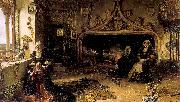 |
Pradilla, Francisco -- Click Here
|
|
Spanish, 1848-1921
Spanish painter and museum official. He first studied in Saragossa with the stage designer Mariano Pescador (d 1886), and in 1866 moved to Madrid where he began to work with the stage designers and decorators Ferri and Busato. He entered the Escuela Superior de Pintura, Escultura y Grabado and also attended the Academia de Acuarelistas. In 1873 Pradilla and his fellow student Casto Plasencia (1846-90) won history painting scholarships to study at the newly founded Academia Espaola de Bellas Artes in Rome. In 1874 he sent from Rome a copy of Raphael's Dispute over the Holy Sacrament, a work Pradilla completed in collaboration with Alejandro Ferrant (b 1844), another Spanish scholarship holder. During Pradilla's second and third years abroad he travelled through France, visiting the Paris Exposition Universelle of 1875, and Italy, where he was particularly impressed by Venice and the works of Veronese, Titian and Jacopo Tintoretto. Pradilla won a major prize in 1878 at the Exposicien Nacional de Bellas Artes in Madrid; as a result of this success he received the commission for another large picture on a historical theme, the Surrender of Granada (1882; in situ) for the Palacio del Senado (now Pal. de las Cortes) in Madrid. This work shows Pradilla's concern to paint from life in his treatment of the landscape of Granada. He produced other paintings on related subjects, including Mad Queen Joanna Imprisoned at Tordesillas (priv. col., see Pardo Canalis, pl. xviii) and the Sigh of the Moor (Madrid, Rodriguez Bauze priv. col., Pardo Canalis, pl. xvii). Pradilla also painted lively scenes of local life and colour. The years of his stay in Rome, where he was director of the Academia Espa?ola between 1881 and 1883, |
|
 |
Poynter, Sir Edward John -- Click Here
|
|
English Classicist Painter, 1836-1919
English painter, draughtsman, decorative designer and museum official. He came from an artistic family: his great-grandfather was Thomas Banks the sculptor, and Ambrose Poynter, his father, was an architect and watercolour painter. Edward began studying art in 1852 under Thomas Shotter Boys, a friend of his father. In 1853-4 Poynter visited Rome, where he was greatly impressed by the large-scale academic painting of Frederic Leighton. Returning to London, he studied at Leigh's Academy and the studio of William Dobson (1817-1898). Poynter entered the Royal Academy Schools in 1855 but his admiration for French painting led him to Charles Gleyre's studio in Paris the following year. He remained there until 1859, with fellow students George Du Maurier, Thomas Armstrong and Whistler; their activities are described in Du Maurier's novel Trilby (1894). At this time Poynter received his first commissions for decorative work. He began designing stained glass and painting furniture and, after his return to England, he was employed by his friend the architect William Burges to decorate the ceiling of Waltham Abbey, Essex, in 1860. |
|
 |
POUSSIN, Nicolas -- Click Here
|
|
French Baroque Era Painter, 1594-1665
French painter and draughtsman, active in Italy. His supreme achievement as a painter lies in his unrivalled but hard-won capacity to subordinate dramatic narrative and the expression of extreme states of human passions to the formal harmony of designs based on the beauty and precision of abstract forms. The development of his art towards this end was focused on the search for a point of equilibrium and synthesis between the forces of the Classical and the Baroque around which most critical debate in Rome was concentrated during the 1630s. Poussin did not aspire to the classicism of Raphael's idealized human forms or Michelangelo's re-embodiment of the physical splendours of the antique world, nor did he attempt to vie with the bravura and energy of Annibale Carracci's treatment of Classical mythology in the Galleria of the Palazzo Farnese in Rome. Equally he was not concerned with the illusionistic effects and heightened emotionalism of Baroque artists such as Pietro da Cortona and Lanfranco. He was concerned above all with interpreting his subject-matter, whether Classical or religious, and telling a story with the greatest possible concentration of emotional response, |
|
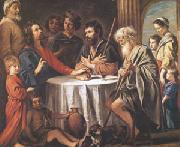 |
Poussin -- Click Here
|
|
Les Andelys 1594 - Rome 1665 |
|
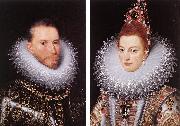 |
POURBUS, Frans the Younger -- Click Here
|
|
Flemish painter (b. 1569, Antwerpen, d. 1622, Paris).
was a Flemish painter, son of Frans Pourbus the Elder and grandson of Pieter Pourbus. He was born in Antwerp and died in Paris. He is also referred to as "Frans II". Pourbus worked for many of the highly influential people of his day, including the Brussels-based Spanish Regents of the Netherlands, the Duke of Mantua and Marie de' Medici, Queen of France. Works of his can be found in the Louvre, the Prado, the Rijksmuseum, the Royal College of Art, |
|
 |
POURBUS, Frans the Elder -- Click Here
|
|
Netherlandish painter (b. 1545, Bruges, d. 1581, Antwerpen).
was a Flemish Renaissance painter. He was known primarily for his religious and portrait painting and worked mainly in Antwerp. His father was painter Pieter Pourbus and his son was painter Frans Pourbus the younger. |
|
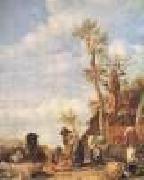 |
POTTER, Paulus -- Click Here
|
|
Dutch Baroque Era Painter, 1625-1654
Son of Pieter Potter. He was related through his mother, Aechtie Pouwels (d 1636), to the wealthy and powerful von Egmont and Semeyns families, who held important offices in Enkhuizen and at the court in The Hague. He worked in his father's studio in Amsterdam during the 1630s and, like him, painted history subjects that show the strong influence of Claes Moeyaert, with whom Paulus may also have studied. In the painting Abraham Returning from Canaan he adapted the landscape setting from an etching by Moses van Uyttenbroeck and the figures from works by Moeyaert from over ten years earlier. Significantly, however, he redistributed the numerous animals and figures that Moeyaert had aligned evenly across the frontal plane; Potter placed them to one side, permitting a view into the deep distance where other animals can be seen. Potter followed his father more than Moeyaert in searching for ways to integrate his figures with the landscape, |
|
 |
POT, Hendrick Gerritsz -- Click Here
|
|
Dutch Baroque Era Painter, ca.1585-1657 |
|
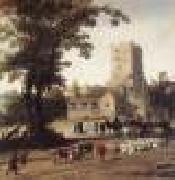 |
POST, Pieter Jansz -- Click Here
|
|
(b. 1608, Haarlem, d. 1669, 's Gravenhage). |
|
 |
POST, Frans -- Click Here
|
|
Dutch Baroque Era Painter, 1612-1680
Painter and draughtsman, brother of Pieter Post. He was one of the first trained European landscape artists to paint in the New World. His paintings and drawings without exception depict Brazilian scenery with exotic buildings, plants, animals and natives. He probably received his early training from his father and was also influenced by his brother's early landscapes, although no works exist from this period. When Johan Maurits, Count of Nassau-Siegen went to Brazil as Governor General of the Dutch colony in the north-east in October 1636, Frans Post, together with ALBERT ECKHOUT, was among the artists and scientists on board to record various aspects of Brazilian life, landscape, |
|
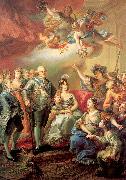 |
Portana, Vicente Lopez -- Click Here
|
|
Spanish Painter, 1772-1850
was a Spanish painter, considered the best portrait painter of his time. Vicente Lepez y Portaña was born in Valencia on September 19, 1772. His parents were Cristebal Lepez Sanchordi and Manuela Portaña Meer. Vicente Lepez began formally studying painting in Valencia at the age of thirteen, he was a disciple of father Antonio de Villanueva, a Franciscan monk, and he studied at the Academy of San Carlos in his native city. He was seventeen when he won first price in drawing and coloring receiving a scholarship to study in the prestigious Academia Real de Bellas Artes de San Fernando in Madrid. For the following three years in Madrid, he apprenticed with the Valencian painter, Mariano Salvador Maella. Vicente Lepez returned to Valencia in 1794 and subsequently became vice-director of painting at the Academy where he had studied as a boy. |
|
 |
PORCELLIS, Jan -- Click Here
|
|
Flemish Baroque Era Painter, ca.1580-1632
|
|
 |
Popova, Liubov -- Click Here
|
|
Russian Constructivist Painter and Designer, 1889-1924 |
|
 |
Pope Alexander -- Click Here
|
|
American artist ,
b.1849 d.1924
|
|
 |
POORTER, Willem de -- Click Here
|
|
Dutch Baroque Era Painter, 1608-ca.1648
Dutch painter. His father, Pieter, came from Flanders to Haarlem, where in 1631 works by Willem were recorded for the first time. In 1634 Willem was registered in Haarlem as a master painter, and in 1635 Pieter Casteleijn was named as his pupil. As late as 1643 Pieter Abrams Poorter and Claes Coenraets began their studies with him in Haarlem. Willem is mentioned for the last time in the archives of the Haarlem Guild of St Luke in 1645, the year he left for Wijk bij Heusden. He supposedly studied under Rembrandt, together with his fellow townsman Jacob de Wet. There is no documentation to support this assumption, but a number of de Poorter's small-scale biblical and history paintings bear such a striking likeness to Rembrandt's biblical compositions of c. 1630 that the two hands are often confused. Rembrandt's Presentation in the Temple (1631; The Hague, Mauritshuis; see REMBRANDT VAN RIJN) was copied (Dresden, Gemeldegal. Alte Meister) by de Poorter, who also painted his own version (Kassel, Schloss Wilhelmsh?he). The lighting in de Poorter's Entombment (Guernsey, D. Cevat priv..) was also apparently inspired by Rembrandt's example. Since de Poorter's paintings were first reported in Haarlem in 1631, the year that Rembrandt moved from Leiden to Amsterdam, it seems likely that de Poorter received his training in the Leiden workshop, where Gerrit Dou had also been working since 1628. |
|
|
|
 |
Pontormo, Jacopo -- Click Here
|
|
b Pontormo, nr Empoli, 26 May 1494; d Florence, 31 Dec 1556).
Italian painter and draughtsman. He was the leading painter in mid-16th-century Florence and one of the most original and extraordinary of Mannerist artists. His eccentric personality, solitary and slow working habits and capricious attitude towards his patrons are described by Vasari; his own diary, which covers the years 1554-6, further reveals a character with neurotic and secretive aspects. Pontormo enjoyed the protection of the Medici family throughout his career but, unlike Agnolo Bronzino and Giorgio Vasari, did not become court painter. His subjective portrait style did not lend itself to the state portrait. He produced few mythological works and after 1540 devoted himself almost exclusively to religious subjects. His drawings, mainly figure studies in red and black chalk, are among the highest expressions of the great Florentine tradition of draughtsmanship; close to 400 survive, forming arguably the most important body of drawings by a Mannerist painter. His highly personal style was much influenced by Michelangelo |
|
 |
Pontormo -- Click Here
|
|
Italian Mannerist Painter, 1494-ca.1556
Italian painter and draughtsman. He was the leading painter in mid-16th-century Florence and one of the most original and extraordinary of Mannerist artists. His eccentric personality, solitary and slow working habits and capricious attitude towards his patrons are described by Vasari; his own diary, which covers the years 1554-6, further reveals a character with neurotic and secretive aspects. Pontormo enjoyed the protection of the Medici family throughout his career but, unlike Agnolo Bronzino and Giorgio Vasari, did not become court painter. His subjective portrait style did not lend itself to the state portrait. He produced few mythological works and after 1540 devoted himself almost exclusively to religious subjects. His drawings, mainly figure studies in red and black chalk, are among the highest expressions of the great Florentine tradition of draughtsmanship; close to 400 survive, forming arguably the most important body of drawings by a Mannerist painter. |
|
 |
Pompeo Mariani -- Click Here
|
|
(Monza, Province of Milan 1857 - Bordighera, Province of Imperia, 1927) was an Italian painter.
The nephew of Mose Bianchi, Mariani abandoned a career in banking to devote himself entirely to painting. His apprenticeship began in 1879 under the guidance of the painter Eleuterio Pagliano, who introduced him to life studies. A trip to Egypt with Uberto DelleOrto in 1881 provided subjects for the works shown at the Brera exhibitions of the next two years. He focused on landscape painting and began to specialise in seascapes in 1883, when he first stayed on the coast of Liguria. The first views of the Zelata area outside Pavia appeared in 1894. His art is characterised by subtle sensitivity in the investigation of the reflection of light on water, captured in different seasons and times of the day to achieve highly atmospheric effects. In was at the beginning of the new century that he began to combine naturalistic landscapes with depictions of the elegant world of high society in fashionable gatherings and cafes. His vast production of landscapes and portraits was regularly presented at the major national and international exhibitions and won numerous official awards.
|
|
 |
Pompeo Batoni -- Click Here
|
|
Italian
1708-1787
Pompeo Batoni Location
Italian painter and draughtsman. In his day he was the most celebrated painter in Rome and one of the most famous in Europe. For nearly half a century he recorded the visits to Rome of international travellers on the GRAND TOUR in portraits that remain among the most memorable artistic accomplishments of the period. He was equally gifted as a history painter, and his religious and mythological paintings were sought after by the greatest princes of Europe. |
|
 |
Pollard, James -- Click Here
|
|
English, 1792-1867
Painter and etcher, son of Robert Pollard. His early career was spent in the shadow of his father, for whom he worked as an etcher of miscellaneous sporting subjects before establishing himself c. 1820 as a sporting painter in his own right. A typical example is Doncaster Races: Horses Starting for the St Leger (1831; Paul Mellon priv. col.). Following a commission from the King's Printseller, Edward Orme, for an inn signboard showing a coach and horses, Pollard began to specialize in coaching scenes. |
|
|
|
 |
Pollaiuolo, Jacopo -- Click Here
|
|
Approx. 1441-1496
Painter, brother of Antonio Pollaiuolo. He was described as a painter in the membership records of the Compagnia di S Luca, which he joined in 1472. According to tradition, he initially trained under Andrea del Castagno. In his 1480 tax return Piero reported that he had a small house adjoining the family home '...which I use when I have painting to do'. He produced many paintings for the Florentine workshop, |
|
 |
Polk, Charles Peale -- Click Here
|
|
American, 1767-1822
American painter. Orphaned as a child, he was raised in Philadelphia, PA, by his uncle, Charles Willson Peale, who taught him to paint. In 1791 Polk moved to Baltimore, MD, where he achieved limited success as a portrait painter. Seeking commissions, he moved to Frederick, MD, in 1796. Over the next five years during travels as an itinerant limner through western Maryland and Virginia he reached his mature style. Abandoning his academic training, Polk developed a distinctive but naive artistic vocabulary with a heightened palette, electric highlights and an exaggerated attenuation of the human form. The portraits of Isaac Hite and his wife Eleanor Madison Hite, as well as James Madison sr and Eleanor Conway Madison (all Middletown, VA, Belle Grove), were commissioned in 1799 and are accepted as his masterpieces. Isaac Hite also commissioned the quintessentially 'republican' portrait of Thomas Jefferson (New York, Victor Spark priv. col.), executed at Monticello in 1799. In 1801 Polk moved to Washington, DC, working as a clerk in the Treasury. During the next 16 years he painted few portraits in oil |
|
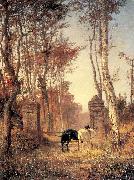 |
Polenov, Vasily -- Click Here
|
|
Russian, 1844-1927
He began a systematic study of drawing in 1856, first with the landscape painter Pavel Cherkasov (1834-1900), then from 1859 to 1861 with Pavel Chistyakov (1832-1919). He also took lessons with Chistyakov, whom he considered his most important teacher, in 1871 and early 1872, after finishing his academic course. From 1863 to 1871 Polenov studied at the St Petersburg Academy of Art, where he met members of the progressive wing of the Russian artistic intelligentsia, and occasionally in the faculty of law at St Petersburg University. The classical education he received at home, his academic training and lessons with Chistyakov led Polenov towards an 'exalted' history painting, although he personally inclined towards landscape. This dualism remained in Polenov's work for the duration, and not until the late 1880s and early 1890s did he achieve a stable relationship between the two forms. The whole of his student career and the initial postgraduate, scholarship period was largely taken up with historical works: from academic compositions, for example the Resurrection of Jairus's Daughter (1871; Pskov, Mus. Hist., Archit. & A.), for which he received the Grand Gold Medal and a travel bursary (in Germany and Italy, 1872-3, and France, 1873-6), to numerous pictures and sketches on subjects from antiquity and medieval history, executed in France or shortly after his departure from there, under the perceptible influence of Paul Delaroche |
|
 |
POLACK, Jan -- Click Here
|
|
Polish Northern Renaissance Painter, died 1519 |
|
|
|
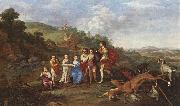 |
POELENBURGH, Cornelis van -- Click Here
|
|
Dutch Baroque Era Painter, ca.1586-1667 |
|
 |
POEL, Egbert van der -- Click Here
|
|
Dutch Baroque Era Painter, 1621-1664 |
|
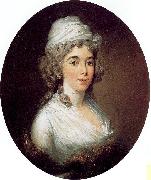 |
Plowman, Frederick Prussia -- Click Here
|
|
Irish, 1773-1820 |
|
 |
PLEYDENWURFF, Hans -- Click Here
|
|
German Northern Renaissance Painter, 1420-1472 |
|
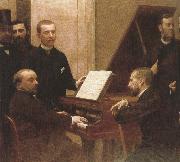 |
plato -- Click Here
|
|
Born: c. 428 B.C.
Birthplace: Athens, Greece
Died: 347 B.C.
Best Known As: The ancient philosopher who wrote The Republic |
|
 |
Plamondon, Antoine Sebastien -- Click Here
|
|
1841
Oil on canvas
National Gallery of Canada, Ottawa. |
|
|
|
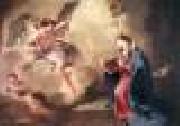 |
PITTONI, Giambattista -- Click Here
|
|
Italian Rococo Era Painter, 1687-1767
Italian painter and draughtsman. With Giambattista Tiepolo and Piazzetta, he was the most representative history painter of the Venetian Rococo. Besides altarpieces for Venetian and other churches as well as devotional images for private clients on both sides of the Alps, he painted subjects from mythology and Classical literature for collectors and connoisseurs in a Rococo idiom all his own; it is these secular pictures for which he is best known. Zava Boccazzi's catalogue raisonn of Pittoni's paintings (1979) includes 247 extant autograph works and 117 paintings now lost, destroyed or untraced. Binion's catalogue raisonn? of the artist's drawings (1983) lists 304 sheets. Pittoni's total output must have been far larger, as is evident from the drawings, many of which are studies for unknown works. For instance, Pittoni must occasionally have painted decorations for secular buildings and palazzi, probably in fresco, though none has yet come to light, with the notable exception of the few frescoes with scenes from the Life of Diana, painted in 1727 in the palazzetto Widman in Bagnoli di Sopra near Padua. |
|
 |
PISANELLO -- Click Here
|
|
Italian painter (b. 1395, Pisa, d. 1455, Roma).
known professionally as Antonio di Puccio Pisano or Antonio di Puccio da Cereto, also erroneously called Vittore Pisano by Giorgio Vasari, was one of the most distinguished painters of the early Italian Renaissance and Quattrocento. He was acclaimed by poets such as Guarino da Verona and praised by humanists of his time who compared him to such illustrious names as Cimabue, Phidias and Praxiteles. He is known for his resplendent frescoes in large murals, elegant portraits, small easel pictures, and many brilliant drawings. He is the most important commemorative portrait medallist in the first half of the 15th century. He was employed by the Doge of Venice, the Pope in the Vatican and the courts of Verona, Ferrara, Mantua, Milan, Rimini, and by the King of Naples. He stood in high esteem of the Gonzaga and Este families. He had many of his works wrongly ascribed to other artists such as Piero della Francesca, Albrecht Derer and Leonardo da Vinci, to name a few. While most of his paintings have perished, a good many of his drawings and medals have survived. His life is somewhat shrouded in mystery. He was born between 1380 and 1395 and died between 1450 and 1455 (probably between 14 July and 8 October 1455). He was a native of Pisa but spent his early years in San Vigilio sul Lago in the territory of Verona. He was probably given his early training by a Veronese painter (perhaps Altichiero or Stefano da Verona) as his early style is in the tradition of veronese painting. Between 1415 and 1420, he was the assistant of the renowned painter and illuminator Gentile da Fabriano from whom he acquired his refined, delicate, detailed style. Pisanello also acquired from him a taste for precious materials and beautiful fabrics that can be found in his later paintings. The frescoes in the Doge's Palace at Venice, on which they worked together, have perished as well as the frescoes in the Basilica of St. John Lateran and the palaces of Mantua and Pavia. In 1422, he was reported to be in Mantua in the service of young Ludovico Gonzaga, son of the Marchese of Mantua Gianfrancesco Gonzaga. He continued to work for the Gonzaga family till the 1440s. Giorgio Vasari, an artist and biographer of the Italian Renaissance, states that Pisanello also worked in the workshop of Andrea del Castagno, author of the painted equestrian monument of Niccole da Tolentino (1456) in the Cathedral in Florence. He must also have known Paolo Uccello, the painter of the Battle of San Romano with its many horses. Pisanello's love of drawing horses probably finds its origin in this relationship. But as there is so much unknown of his life, this attribution by Vasari is not reliable and may only be a legend. His Madonna and Quail, now in the Museo di Castelvecchio in Verona, is signed by "Antonius Pisanus". It is tentatively dated at c. 1420. The style is a blend of the styles of Gentile da Fabriano and Stefano da Verona. This might show that Pisanello was also a pupil of the latter in Verona. Pisanello stayed again in Verona in 1424. However, according to some scholars, he painted frescoes about hunting and fishing and jousts in Pavia the same year. These were commissioned by the Duke of Milan Filippo Maria Visconti. There is no trace of these frescoes left. Back in Mantua with the Gonzagas between 1424 and 1426, he painted one of his important surviving works: the fresco Annunciation in San Fermo, Verona. It was used to embellish the funeral monument of Nicole di Brenzoni by the Florentine sculptor Nanni di Bartolo. When Gentile da Fabriano died in Rome between August and October 1427, his work at the Basilica of St. John Lateran was unfinished. Pisanello completed the frescoes of his former master between 1431 and 1432. All these frescoes were destroyed when the basilica was rebuilt in the 17th century by Francesco Borromini. The Kupferstichkabinet in Berlin has a pale sketch of this fresco, drawn by Borromini. While in Rome, he became more and more influenced by the classical style of Renaissance art. His drawings are generally prized as jewels of the quattrocento, and are wonderful examples of the elegant garb of the time, including spectacular hats. In contrast with his contemporaries, his drawings are not drafts for future paintingings but are autonomous work of art. He compiled several books of drawings, detailed and accurate studies of fauna and flora drawn with a poetic naturalism, and elegant costumes. Pisanello traveled to several Italian cities and was introduced to a number of courts. He stayed for a while in Florence. In this period he painted two important portraits: Emperor Sigismund, now in the Kunsthistorisches Museum, Vienna (but the attribution is still contested) and Portrait of a Man (now in the Palazzo Rosso, Genoa). He returned to Verona between 1433 and 1438. His fresco masterpiece from this period is Saint George and the Princess of Trebizond (1436-38) at the Pellegrini Chapel, Sant'Anastasia, Verona. It had to be restored after water seepage badly damaged the fresco at the end of the 19th century. He prepared for this painting with a large number of drawings. Many of these famous drawings are on display in the Louvre, Paris. From 1435, Pisanello became more and more interested in portraiture and medalmaking. He was introduced to Leonello d'Este, Marquess of Ferrara. His famous Portrait of an Este Princess dates from this period. His Vision of Saint Eustace, now at the National Gallery in London, long ascribed to Albrecht Derer because of its perfection of this very fine panel, shows most animals in profile or defined poses with miniature-like delicacy. The story in this small painting (egg tempera on wood) is probably only a pretext for showing "noble" animals (horses, hunting dogs, stag, bear...) and the most noble creature of all: the hunting courtier. In 1438, the Council of Basel negotiated with the Byzantine Emperor John VIII Palaiologos. On this occasion Pisanello struck a commemorative medal of the emperor. He also made some drawings with portraits of the emperor and his retinue (on display at the Louvre, Paris), suggesting |
|
 |
Piotr Michalowski -- Click Here
|
|
(July 2, 1800 - June 9, 1855) was a Polish painter of the Romantic period, especially known for his many portraits.
His talent was long underestimated, but he was re-discovered by Pablo Picasso in 1948. When the painter visited Poland, he saw Michałowski's work in the Warsaw National Museum and shouted, "Here, painter!"
The Sukiennice Museum, a division of the National Museum in Krakew, contains a room devoted to Michałowski's work.
|
|
 |
PIOLA, Domenico -- Click Here
|
|
Italian Baroque Era Painter, 1627-1703
was a Genoese painter of the Baroque period. His family studio was highly prolific. He apprenticed with his family, including his elder brother, Pellegro Piola, as well as with Domenico Fiasella. Other members of the Piola family, who were artists included Domenico's brother, Giovanni Andrea and his three sons Paolo Gerolamo, Anton Maria, and Giovanni Battista; his two sons-in-law, Gregorio de Ferrari and Domenico Parodi; and his brother-in-law Stefano Camogli. The large family studio, called Casa Piola excelled in both quadratura fresco decoration and canvases. Generations of artists, down to the 20th century, descended from the line of Piola-De Ferrari, including Giovanni Maria De Simoni, who died in 1913 in the original residence of Domenico's family. Domenico was also a well-known printmaker and draughtsman. |
|
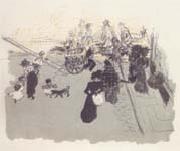 |
Pinturicchio -- Click Here
|
|
Italian Early Renaissance Painter,
1454-1513
was an Italian painter of the Renaissance. He was born in Perugia, the son of Benedetto or Betto di Blagio. He may have trained under lesser known Perugian painters such as Bonfigli and Fiorenzo di Lorenzo. According to Vasari, Pinturrichio was a paid assistant of Perugino. The works of the Perugian Renaissance school are very similar; and paintings by Perugino, Pinturicchio, Lo Spagna and a young Raphael may often be mistaken one for the other. |
|
 |
Pine, Robert Edge -- Click Here
|
|
American, 1720-88
English painter, active also in America. His father, John Pine (1691-1756), was a well-known engraver and printseller of whom William Hogarth painted a portrait (c. 1755; Fredericton, NB, Beaverbrook A.G.). Robert Edge Pine was initially considered to have the potential to rival Joshua Reynolds as a portrait painter, a promise derived from such works as the full-length portrait of George II (1759; Audley End, Essex), painted without a sitting being granted him by the King. In 1760 he won a premium at the Society of Arts, London, for a history painting, the Surrender of Calais to Edward III, also known as the Burghers of Calais (untraced), which was engraved in 1762 by Fran?ois Germain Aliamet (1734-88), and another in 1763 for Canute the Great Reproving his Courtiers for their Impious Flattery (untraced), also engraved by Aliamet. Pine was not invited to become a founder-member of the Royal Academy in 1768, probably because of his radical politics; that year he painted a portrait of the political agitator John Wilkes (London, Westminster Hall). In 1772 he left the Society of Arts following a quarrel over its choice of directors; he moved to Bath, where he joined his brother, Simon Pine (d Aug 1772), a painter of miniatures. Their sister was married to the landscape painter Alexander Cozens. While at Bath Pine painted his most ambitious family group, |
|
 |
Pignoni, Simone -- Click Here
|
|
Italian, 1611-98
Italian painter and draughtsman. He is best known for his many pictures of voluptuous female nudes, which developed the morbidly sensual style of Francesco Furini. His Self-portrait (c. 1650; Florence, Uffizi), in which he depicts himself building up a rounded female form from a skeleton, conveys his fascination with the subject. He had an early education in Latin, followed by an apprenticeship in the workshop of the bookbinder Zanobi Pignoni, a close relative. Domenico Passignano, who frequented the workshop, suggested that Pignoni be apprenticed to Fabrizio Boschi (1570-1642), one of his own former pupils. Pignoni began to study under Boschi |
|
 |
Pietro, Nicolo di -- Click Here
|
|
Italian, active 1394-1427 |
|
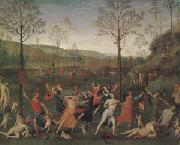 |
Pietro Vannuci called il Perugino -- Click Here
|
|
Citta della Pieve ca 1448-Fontignano 1523 |
|
 |
Pietro vannucci called IL perugino -- Click Here
|
|
Citta della Pieve ca 1448 -Fontignano 1523 |
|
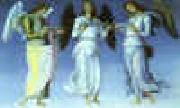 |
Pietro Perugino -- Click Here
|
|
Italian
1450-1523
Pietro Perugino Galleries
Italian painter and draughtsman. He was active in Perugia, Florence and Rome in the late 15th century and early 16th. Although he is now known mainly as the teacher of Raphael, he made a significant contribution to the development of painting from the style of the Early Renaissance to the High Renaissance. The compositional model he introduced, combining the Florentine figural style with an Umbrian use of structure and space, was taken up by Raphael and became widely influential throughout Europe. |
|
 |
Pietro Paolo Vegli -- Click Here
|
|
Pietro Paolo Vegli - Ritratto Del Cardinale Francesco Maidalchini (1621 - 1700)
|
|
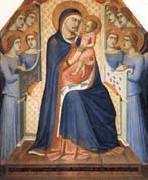 |
Pietro Lorenzetti -- Click Here
|
|
Italian Byzantine Style Painter, ca.1280-1348 |
|
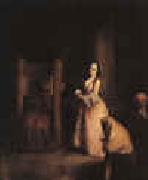 |
Pietro Longhi -- Click Here
|
|
1702-1785
Italian
Pietro Longhi Galleries
Pietro Longhi was born in Venice in the parish of Saint Maria, first child of the silversmith Alessandro Falca and his wife, Antonia. He adopted the Longhi last name when he began to paint. He was initially taught by the Veronese painter Antonio Balestra, who then recommended the young painter to apprentice with the Bolognese Giuseppe Maria Crespi, who was highly regarded in his day for both religious and genre painting. He was married in 1732 to Caterina Maria Rizzi.
Among his early paintings are some altarpieces and religious themes. In 1734, he completed frescoes in the walls and ceiling of the hall in Ca' Sagredo, representing the Death of the giants. Henceforward, his work would lead him to be viewed in the future as the Venetian William Hogarth, painting subjects and events of everyday life in Venice. The gallant interior scenes reflect the 18th century's turn towards the private and the bourgeois.
Many of his paintings show Venetians at play, such as the depiction of the crowd of genteel citizens awkwardly gawking at a freakish Indian rhinoceros (see image). This painting chronicles Clara the rhinoceros brought to Europe in 1741 by a Dutch sea captain and impresario from Leyden, Douvemont van der Meer. This rhinoceros was exhibited in Venice in 1751. There are two versions of this painting, nearly identical except for the unmasked portraits of two men in Ca' Rezzonico version. Ultimately, there may be a punning joke to the painting, since the young man on the left holds aloft the sawed off horn (metaphor for cuckoldry) of the animal. Perhaps this explains the difference between the unchaperoned women.
Other paintings chronicle the daily activities such as the gambling parlors (Riddoti) that proliferated in the 18th century. In some, the insecure or naive posture and circumstance, the puppet-like delicacy of the persons, seem to suggest a satirical perspective of the artists toward his subjects. Nearly half of the figures in his genre paintings are faceless, hidden behind Venetian Carnival masks. Like Crespi before him, Longhi was commissioned to paint seven canvases documenting the seven Catholic sacraments.
Longhi is well-known as a draughtsman, whose drawings were often done for their own sake, rather than as studies for paintings. Pietro's son, Alessandro, was also an accomplished painter.
A paraphrase of Bernard Berenson states that "Longhi painted for the Venetians passionate about painting, their daily lives, in all dailiness, domesticity, and quotidian mundane-ness. In the scenes regarding the hairdo and the apparel of the lady, we find the subject of gossip of the inopportune barber, chattering of the maid; in the school of dance, the amiable sound of violins. It is not tragic... but upholds a deep respect of customs, of great refinement, with an omnipresent good humor distinguishes the paintings of the Longhi from those of Hogarth, at times pitiless and loaded with omens of change". |
|
|